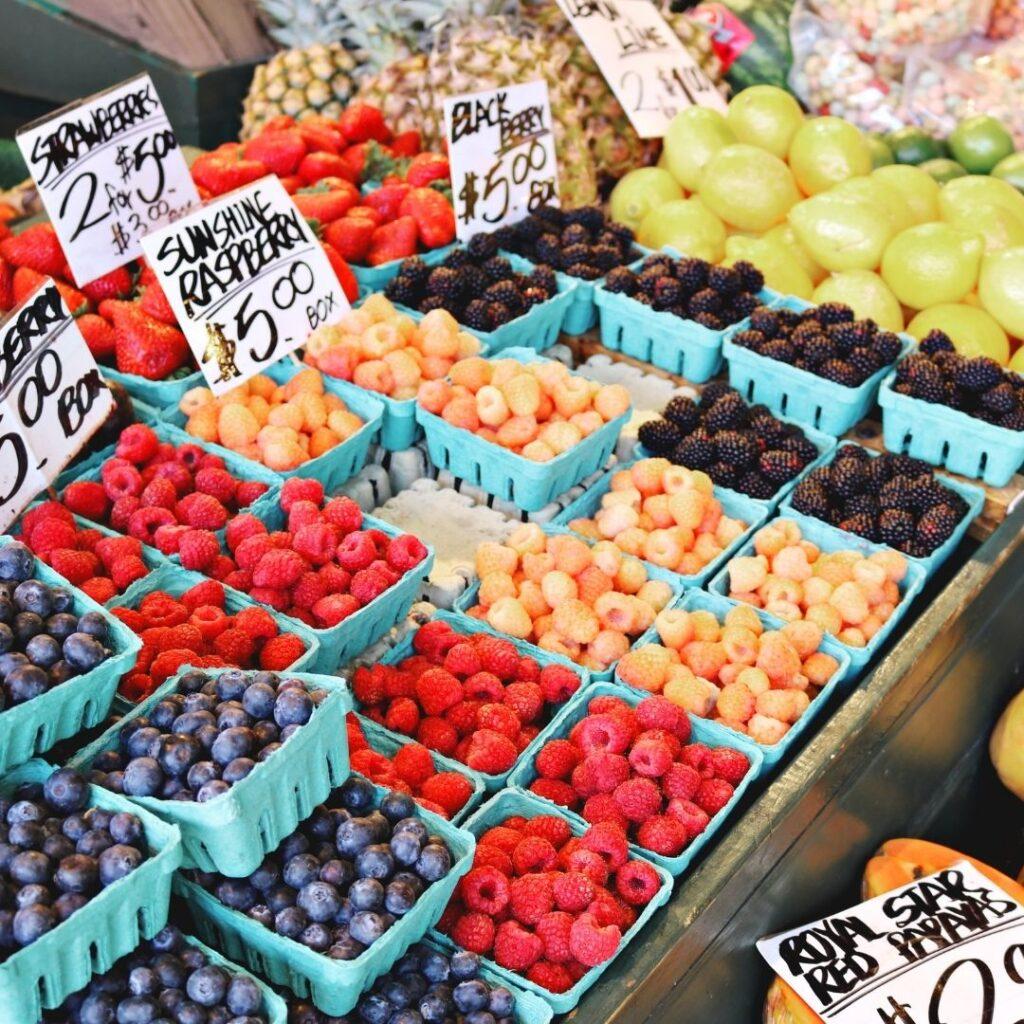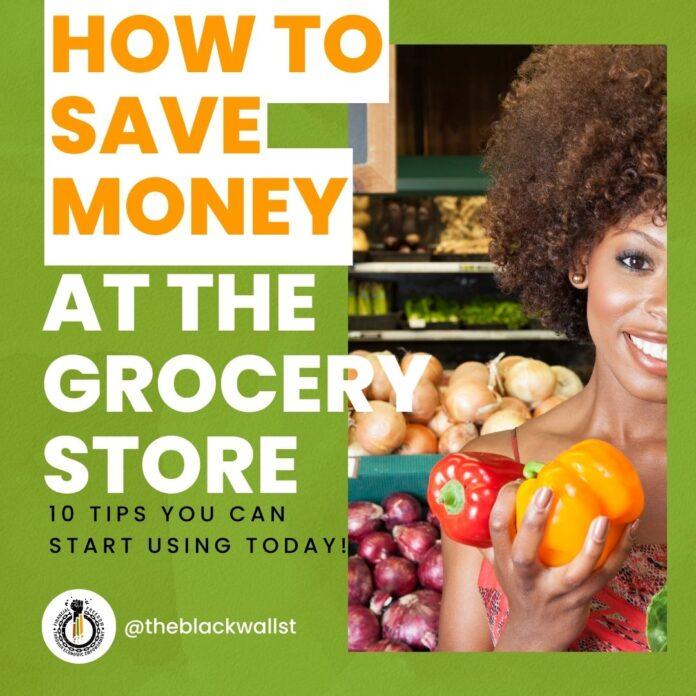If you’re like us, you might be wondering why your grocery bill keeps increasing while the number of items you’re able to purchase is steadily decreasing.
With the rise in inflation, the cost of food at the grocery store has seen the largest 12-month percentage increase since 1980 according the U.S Bureau of Labor Statistics. Now, more than ever, it’s important to make sure that you’re able to save money, cut costs and get more bang for your buck at the grocery store today!
1. Use Coupons
In his book The Millionaire Mind, author Thomas J. Stanley writes that the average millionaire uses coupons. This is the case because they are thinking long-term — it isn’t really about how much money you save on one trip, but the cumulative savings over a life time.
Coupons are hands down one of the easiest ways for you to save money at the grocery store. With websites such as Coupons.com, DontPayFull.com, and Savings.com offering online and printable coupons, you won’t need to spend countless hours poring over newspapers and cutting out coupons (unless that’s your thing) before your next trip to the grocery store.
Just by using coupons and reducing your grocery bill by a couple of dollars a week, you can see savings in the thousands of dollars over the course of a year!
2. Buy Store Brand Products
When buying food staples such as pasta, spices, or other basic ingredients, purchasing generic or store brand items should be your first choice. Many store brand items are of equal quality as its name brand counterpart, but typically cost a fraction of the cost!

Because store brand products don’t require the same overhead expenses, research and development costs, and high-priced advertising budgets, store brand products can be sold at a discount of the name brand products. You can usually find the store brand product right next to its more commercialized competitor on the shelf.
3. Purchase Items on Sale
Most grocery stores promote weekly and monthly sales such as 2-for-1, BOGO free, or short-term “hot sales” through the mail, on their website, or on their social media channels. You can typically find sales on produce, meats, and staple items in addition to whatever the store is promoting that week.
You can also catch great in-store sales for items that are nearing their expiration date, or by shopping in the evening, especially in the meat aisle, to purchased items that have been marked down in price to help get the store get the item out of the door before new shipments arrive.
4. Check Out Your Local Farmer’s Market
Farmer’s markets are a great alternative to your local supermarket when it comes to purchasing fresh produce and saving money. Prices at farmer’s markets tend to be less expensive since most of the produce is locally grown and seasonal.
By purchasing groceries at your local farmer’s market, not only will you save money, but you’ll also be supporting small, local businesses and doing the environment some good by cutting down on the carbon footprint associated with the shipping of goods.

If you’re wondering where the closet farmer’s market is to you, the USDA has a great tool where you can find local farmer’s markets in your area.
Pro Tip: Vendors usually reduce their prices right before the market closes. So, if you don’t mind picking from a smaller selection of goods you can pick up some extra savings by doing your shopping around closing time.
5. Join a Wholesale Club to Buy Items in Bulk
Wholesale clubs such as Sam’s Club, Costco, or BJ’s are able to keep their prices low compared to traditional grocery stores because they charge a membership fee and because they buy their goods in bulk — this allows them to make a profit while passing some of the savings onto you.
If there are items that you use a lot of such as toilet paper or pasta sauce, it is usually cheaper to buy those items in bulk or to purchase the industrial size rather than the regular packaged product. The price per item is cheaper when you buy in bulk, which means you get more of the item at a cheaper price.
If you think you’ll be able to save at least match the cost of the membership fee, then wholesale clubs are definitely worth signing up for especially since they come with a bunch of additional perks such as discounted fuel, vacation packages, and you can’t forget all the free samples!
6. Take Advantage of Reward Programs
Some grocery stores offer FREE reward programs where you can receive in-store discounts and other perks at partnering businesses.
For example, at our local grocery store their rewards program gives you discounts on different in-store items throughout the week, AND you’re also automatically enrolled in their fuel rewards program they offer in conjunction with Shell gas stations. The fuel rewards program works by awarding you one point for every dollar you spend in-store, and for every 100 points you earn you get a $.10/gal discount!
7. Bring Your Own Bags to the Grocery Store
Brining your own bags to the grocery store can be beneficial in multiple ways:
1. If you live in a city or town with a bag tax, you can avoid paying the tax by bringing your own bags;
2. You’re limited to what you can buy based on the number of bags you bring. That means less room for spontaneous purchases; and
3. You’ll make a positive impact or the environment by reducing plastic bag waste.

Avoiding the bag tax isn’t going to make or break the bank, but controlling what you purchase by just limiting your shopping to essential items can make a HUGE difference throughout the year.
8. Shop for Seasonal Produce to Save Money
Fruits and vegetables cost less when they are in season. Out of season items (i.e., watermelons in the winter time) are typically marked up, while in season items tend to be on sale. Besides being more affordable, seasonal foods are also fresher, tastier, and more nutritious than out-of-season food.
The USDA has a great list of seasonal fruits and vegetables you can reference on their website.
9. Plan your Meals in Advance
If you meal prep, you’re probably already familiar with this tip. A good way to control extra spending at the grocery is to try in get in the habit of planning your meals for the week.
When you plan your meals in advance you can avoid overspending while shopping because you already know what you need to buy and you’re less likely to start grabbing items off the shelf if you know you don’t actually need them.
10. Shop with a Grocery List
Creating a shopping list before going to the grocery store is a great way to make sure you’re only buying items that you need and to help avoid impulses purchases.
Before you head out to the grocery store take an inventory of the grocery items you need for the week (i.e., staple and perishable items) and write them down. Once you get to the store, you already know what you need to buy and any item you think about purchasing that isn’t on your list isn’t a necessity and it shouldn’t find its way into your cart.
CLOSING THOUGHTS
With just a few easy adjustments to how you approach grocery shopping, you can see thousands of dollars in savings a year! To make your savings go even further, try using the extra money in your budget to pay off debt, build an emergency fund or invest in the stock market.
So, what savings tips do you use while grocery shopping? Share your tips and tricks with the Black Wall Street community in the comments section.















